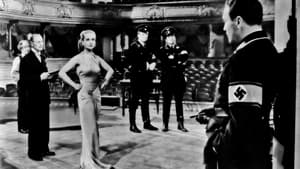Contact: [email protected]
Video Sources 0 Views
- To Be or Not to Be Colorized


Synopsis
[ez-toc]


Introduction
Welcome to the enthralling realm where black-and-white classics meet the vibrant hues of modern technology. “To Be or Not to Be Colorized 1942” is a groundbreaking venture that thrusts the audience into the mesmerizing intersection of old-world charm and contemporary innovation. In this article, we delve into the heart of this cinematic gem, exploring the making of the film, the intricate process of colorization, and the impact it has on the visual narrative.
Read Media File Transfer Agreement: Terms and Conditions
Read FAQ
The Making of “To Be or Not to Be Colorized”
Ernst Lubitsch, a maestro of the silver screen, orchestrated the symphony that is “To Be or Not to Be Colorized.” Released in 1942, this film is a testament to Lubitsch’s directorial brilliance. Starring the dynamic duo of Carole Lombard and Jack Benny, alongside Robert Stack, the film weaves a tale of wit and intrigue against the backdrop of World War II.
Lubitsch’s vision for this project was ambitious, blending humor and satire to address the grim realities of Nazi-occupied Warsaw. Carole Lombard and Jack Benny, with their impeccable comedic timing, brought the characters to life. Lombard’s portrayal of Maria Tura and Benny’s rendition of Joseph Tura added layers of depth to the narrative.
The plot follows the Turas, a theatrical couple caught in a web of espionage and resistance against the Nazis. As the story unfolds, we witness a symphony of comedic elements intertwined with suspense, making “To Be or Not to Be Colorized” a true cinematic masterpiece of its time.
Bringing Color to a Black-and-White Classic
The decision to colorize a classic film is a double-edged sword, blending nostalgia with the allure of modern cinematography. The colorization process involves meticulous restoration techniques that breathe life into the once monochromatic frames. However, the debate over the authenticity and artistic merit of this practice is ongoing.
Colorization involves adding color to black-and-white films through digital or hand-painted methods. The aim is to enhance the viewing experience for contemporary audiences while preserving the essence of the original work. The technology has advanced, allowing for a more nuanced and accurate representation of the filmmakers’ vision.
The pros of colorizing old movies lie in the potential to attract new audiences who might be deterred by black-and-white aesthetics. It rejuvenates classic films, making them more accessible and relatable to younger generations. However, purists argue that this process might compromise the artistic integrity of the original work, altering the director’s intended atmosphere and mood.
The Impact of Colorization on Visual Narrative
In the case of “To Be or Not to Be Colorized,” the colorization brings a new dimension to Lubitsch’s storytelling. The vibrant palette accentuates the nuances of the characters’ emotions, heightening the impact of both the comedic and dramatic moments. The lush red curtains of the theater and the subtle shades of wartime attire contribute to a visually stunning experience.
Comparing the color version to the original black-and-white film provides a fascinating study in cinematic evolution. While the black-and-white version exudes a timeless elegance, the colorized counterpart immerses the audience in a more contemporary visual landscape. It becomes a matter of personal preference, with each version offering a unique perspective on Lubitsch’s masterpiece.
Satire and Social Commentary in a Time of War
“To Be or Not to Be Colorized” stands as a testament to the power of satire in confronting dark historical realities. Set against the backdrop of Nazi-occupied Warsaw, the film uses humor as a weapon, ridiculing the oppressors and highlighting the resilience of the Polish resistance. Lubitsch’s bold approach to addressing wartime struggles through satire adds layers of complexity to the narrative.
The Turas, through their theatrical escapades, become unlikely heroes in the face of adversity. The film navigates through the delicate balance of humor and gravitas, showcasing the strength of the human spirit even in the darkest of times. “To Be or Not to Be Colorized” emerges as a beacon of resistance, using laughter as a form of protest.
Reviving History: The Historical Context of “To Be or Not to Be Colorized”
The film’s portrayal of Nazi-occupied Poland holds historical significance, offering a glimpse into the challenges faced by those living under the shadow of the Third Reich. The Gestapo’s presence looms large, creating an atmosphere of tension and fear. The film, although a comedy, does not shy away from the harsh realities of war.
The depiction of the Polish resistance movement adds authenticity to the narrative. While some elements are exaggerated for comedic effect, the film captures the spirit of resistance and the courage exhibited by ordinary people during tumultuous times. “To Be or Not to Be Colorized” serves as both entertainment and a poignant reminder of the sacrifices made by those who resisted tyranny.
Critical Acclaim and Controversy
Upon its release, “To Be or Not to Be Colorized” garnered critical acclaim for its innovative approach to storytelling and its bold stance against the backdrop of World War II. Audiences and critics alike praised the film for its wit, charm, and the stellar performances of the cast. Carole Lombard and Jack Benny, in particular, received accolades for their ability to balance humor with the gravity of the situation.
However, like any groundbreaking work, the film was not without controversy. Some critics questioned the appropriateness of using comedy to address such a sensitive topic, while others debated the film’s potential to trivialize the harsh realities of war. Despite the controversy, “To Be or Not to Be Colorized” left an indelible mark on cinematic history, influencing future generations of filmmakers.
Preserving Film Heritage Through Colorization
The importance of film preservation cannot be overstated. As technology evolves, the risk of classic films fading into obscurity increases. Colorization serves as a preservation tool, introducing old movies to new audiences who might otherwise overlook them. It becomes a bridge between generations, allowing the timeless stories of the past to resonate with contemporary viewers.
While purists may argue for the preservation of films in their original black-and-white form, the reality is that colorization has become a viable method for ensuring the longevity of cinematic treasures. It is a delicate balance between honoring the artistic intent of the filmmakers and adapting to the changing preferences of modern audiences.
The Enduring Legacy of “To Be or Not to Be Colorized”
“To Be or Not to Be Colorized” has etched its name in the annals of comedy film history. Beyond its historical context and technological innovations, the film’s enduring legacy lies in its ability to transcend time and genre. The seamless blend of humor, satire, and social commentary has inspired countless filmmakers, leaving an indelible mark on the world of cinema.
The legacy of “To Be or Not to Be Colorized” is not confined to its initial release. It continues to influence contemporary comedies, reminding filmmakers of the power of humor to address profound societal issues. The film’s ability to navigate the delicate balance between laughter and reflection solidifies its place as a timeless masterpiece.
Conclusion
In the grand tapestry of cinema, “To Be or Not to Be Colorized 1942” stands as a bridge between the past and the present. As we reflect on this cinematic journey, the invitation is extended to experience both the original black-and-white version and the colorized rendition. Each offers a unique perspective, allowing audiences to appreciate the film’s multifaceted brilliance.
The decision to colorize classic films raises questions about artistic integrity and the preservation of film heritage. Yet, as we navigate this cinematic crossroads, the ultimate goal remains clear – to ensure that the laughter, drama, and brilliance of old movies resonate with audiences for generations to come. “To Be or Not to Be” exemplifies this commitment, inviting us to ponder the delicate dance between preserving film integrity and embracing the technological advancements that breathe new life into timeless classics.














